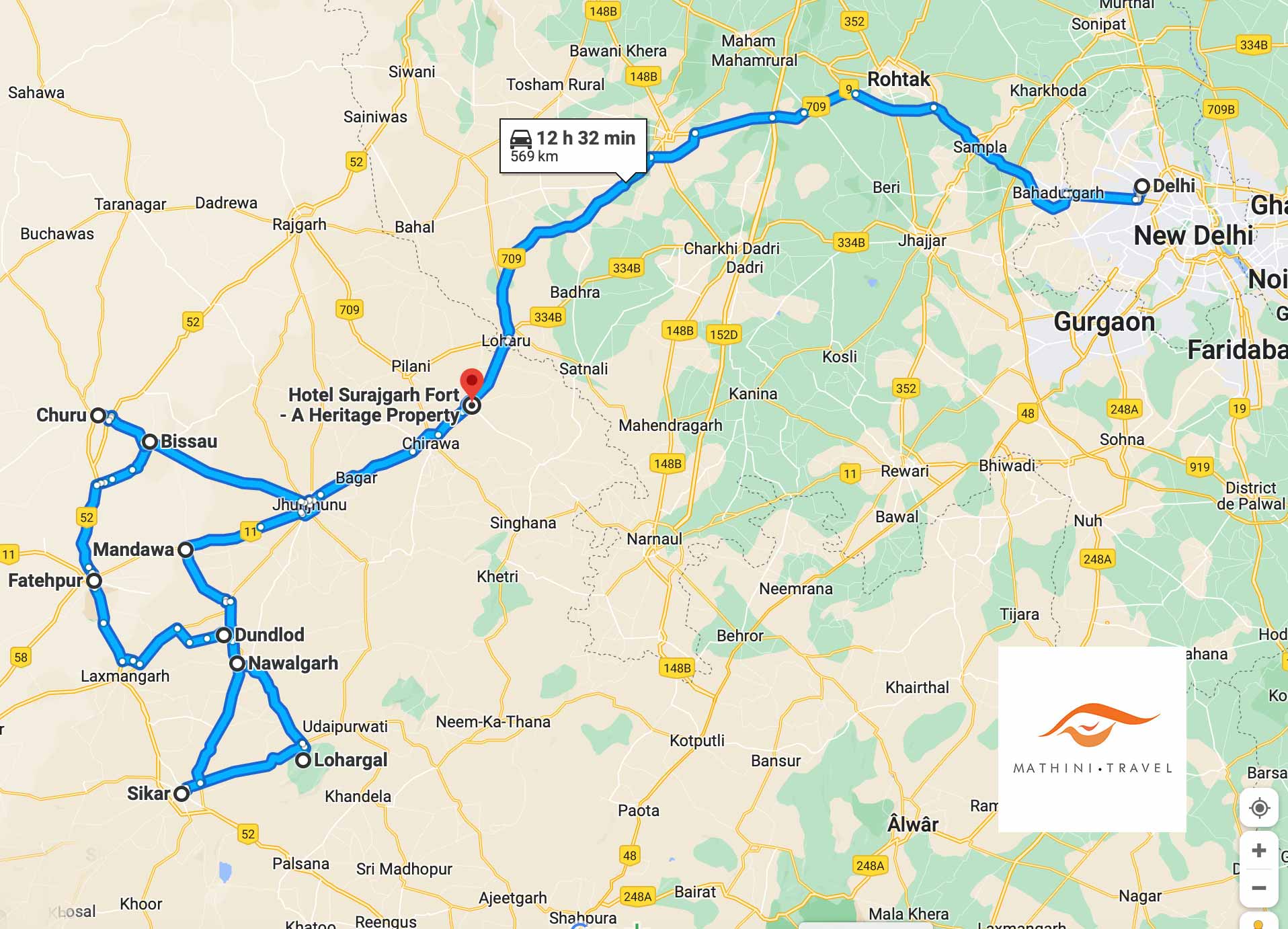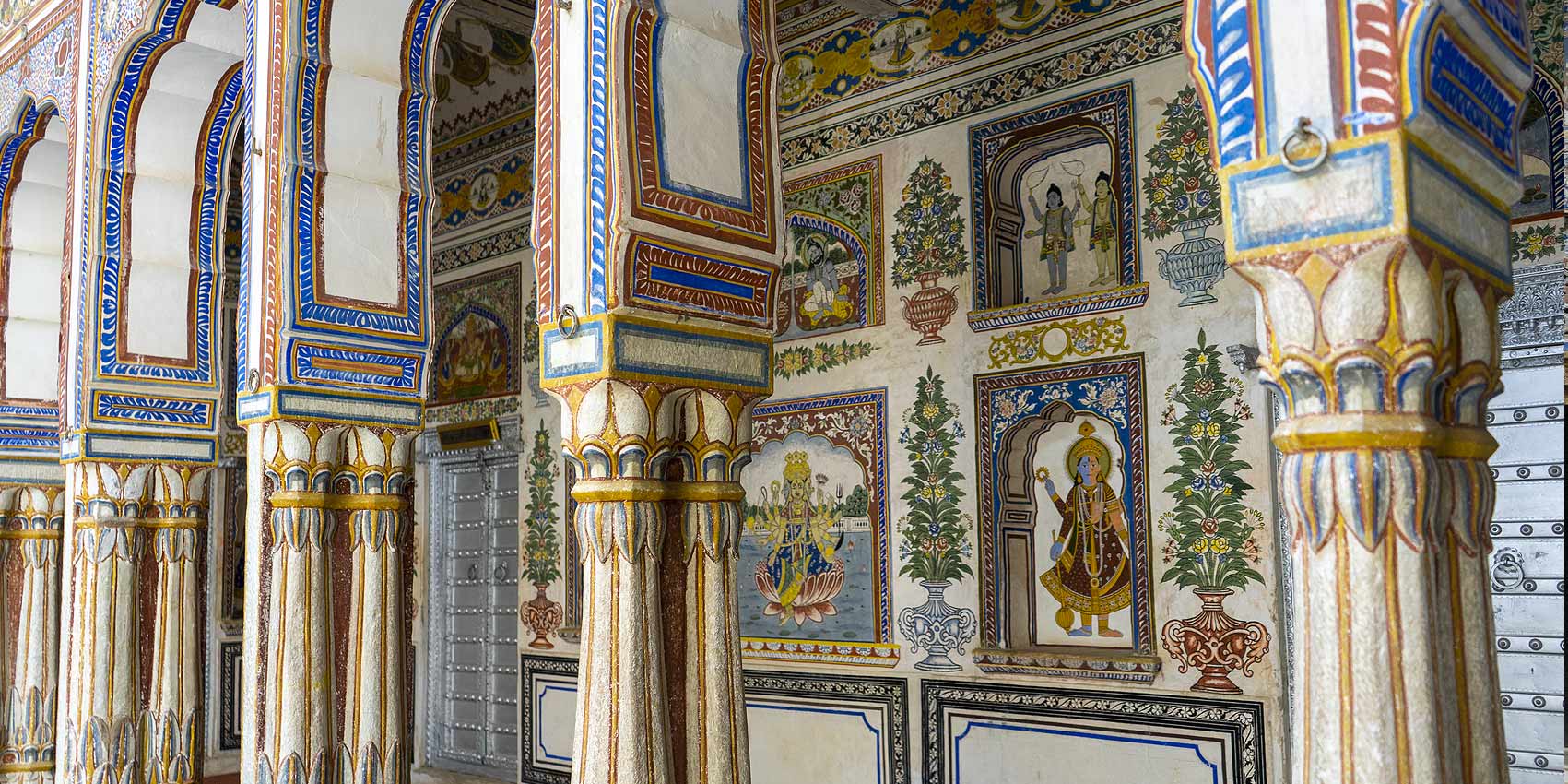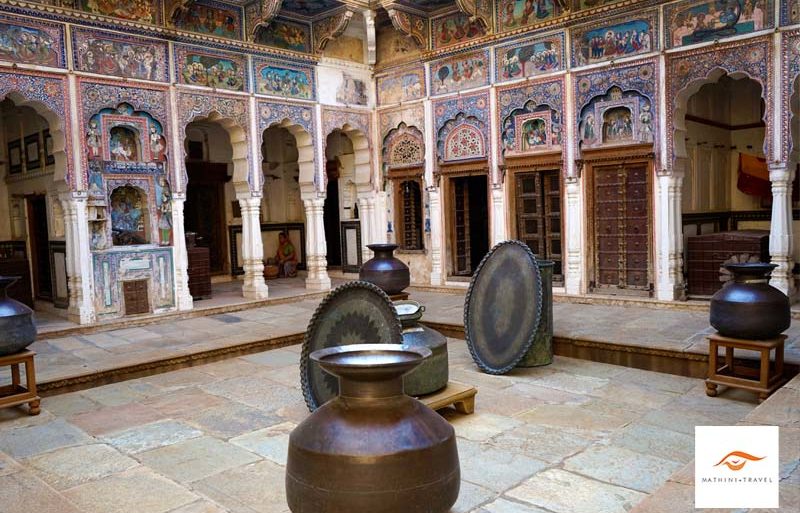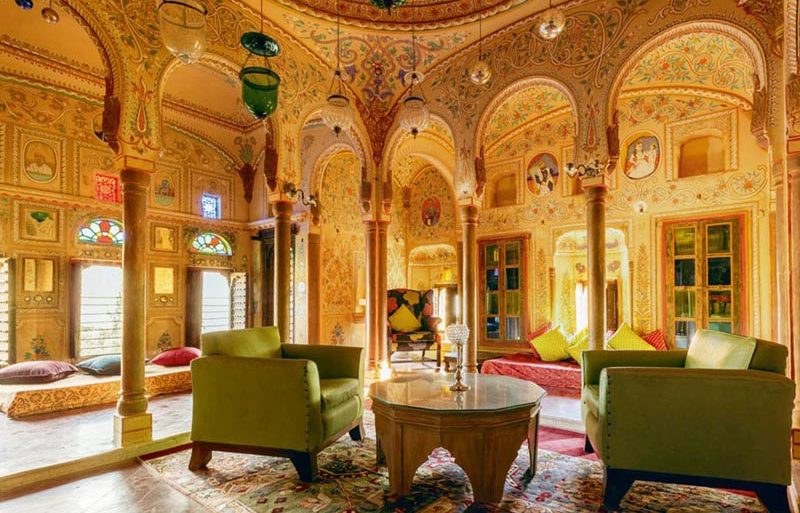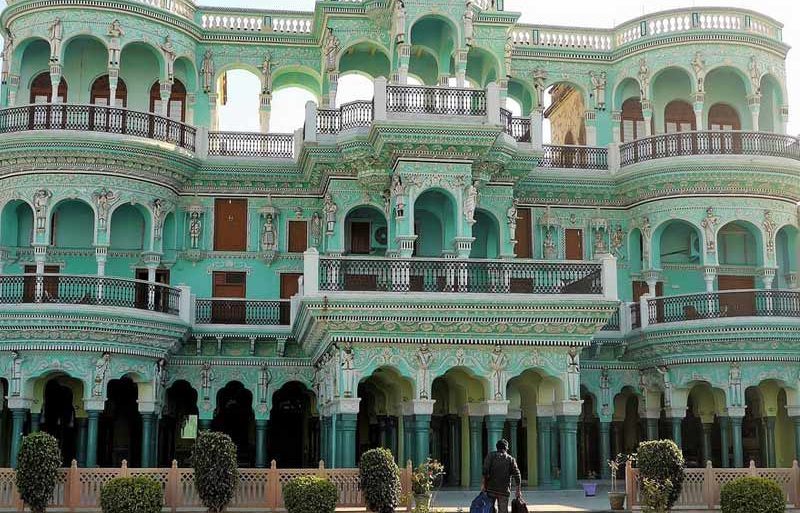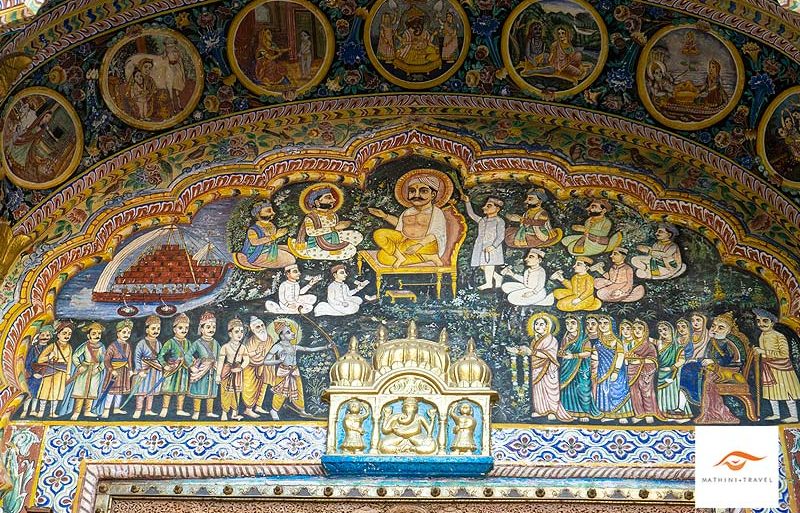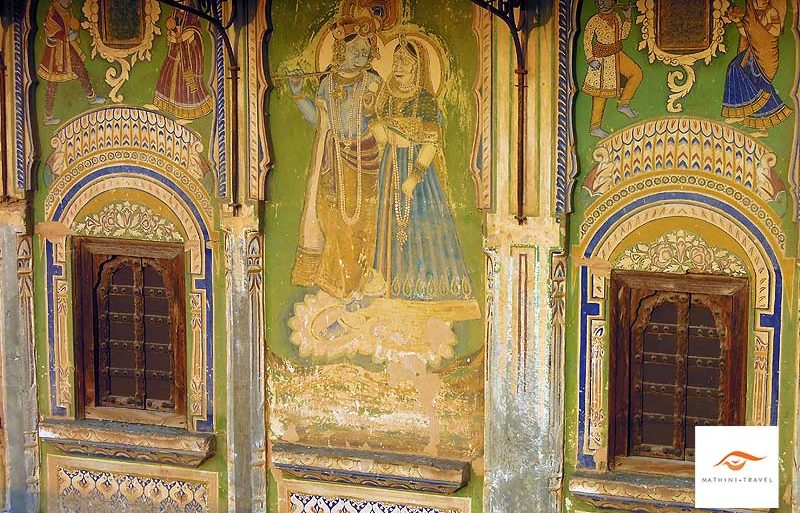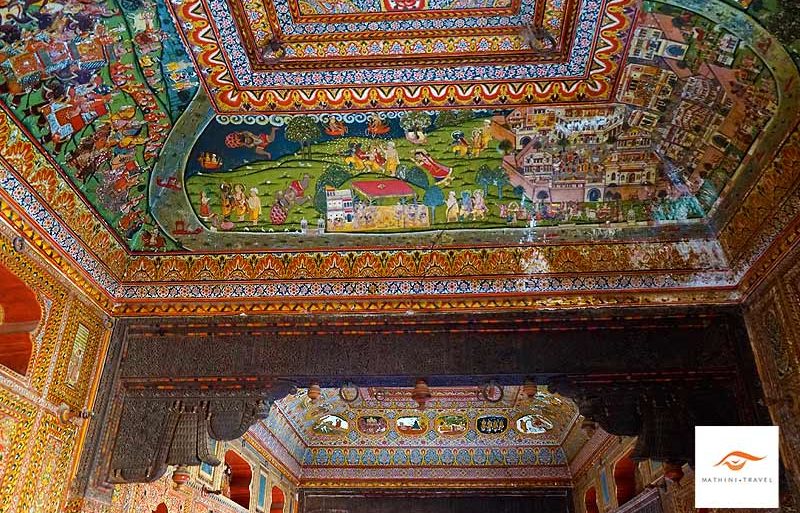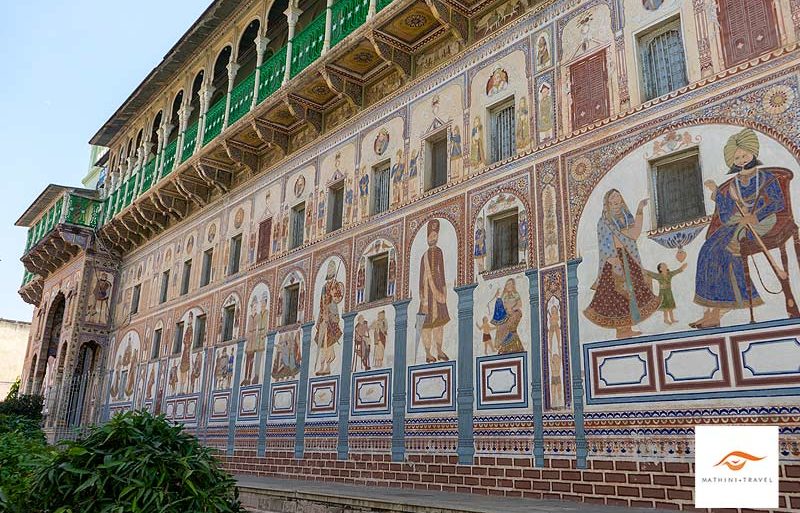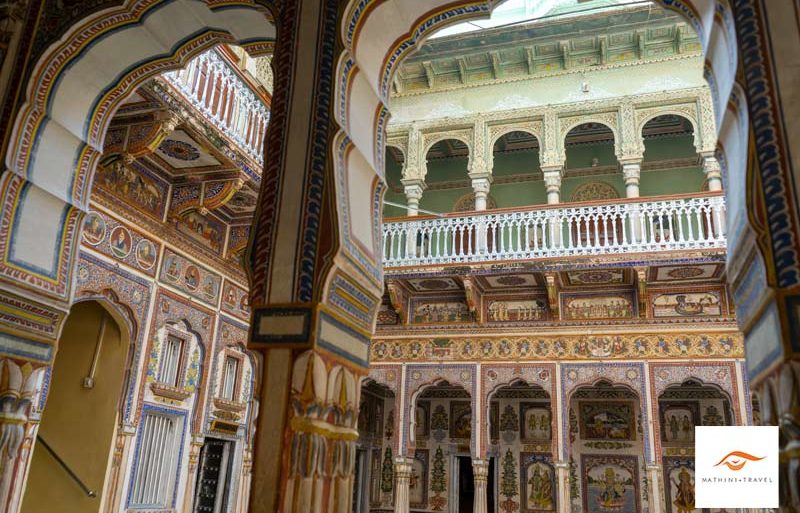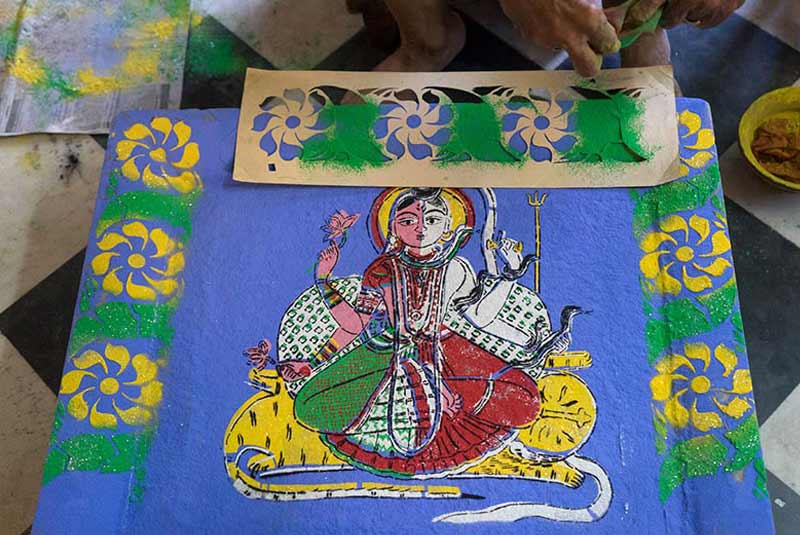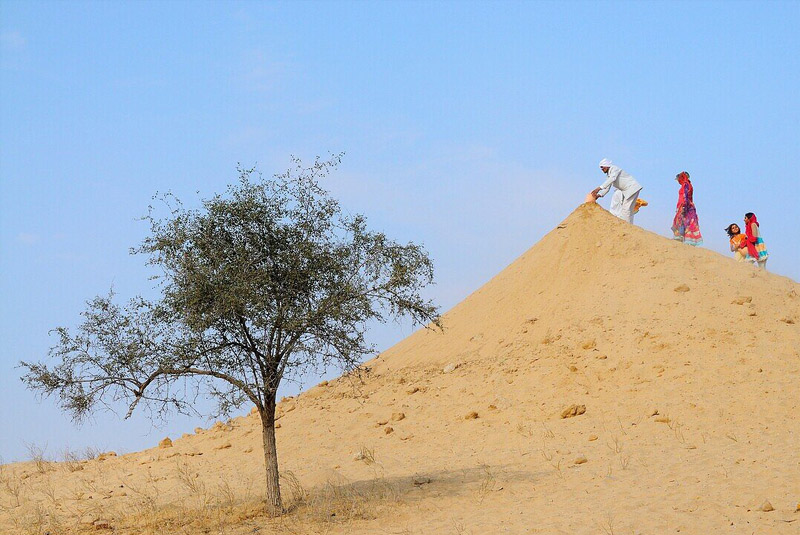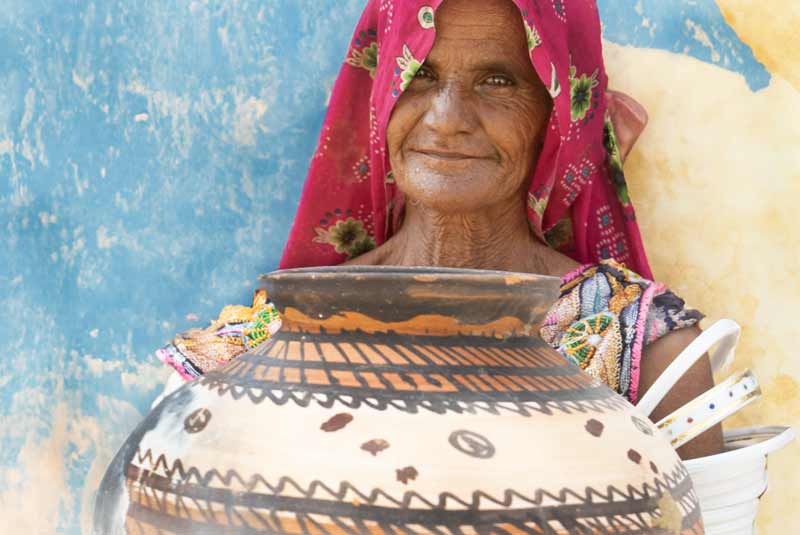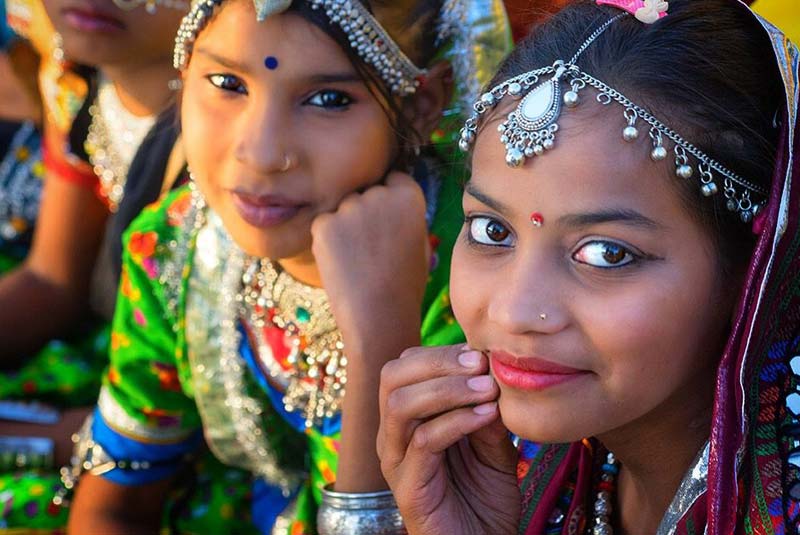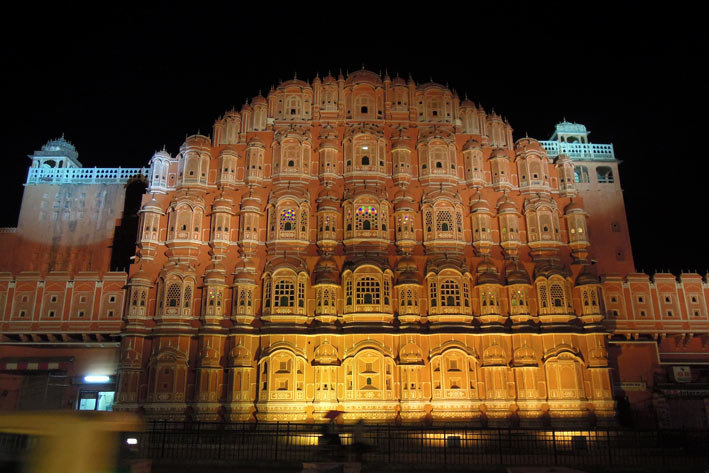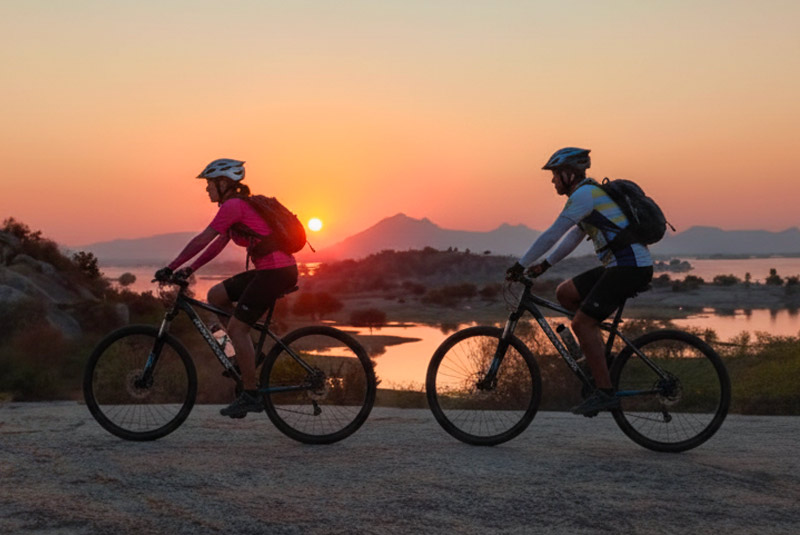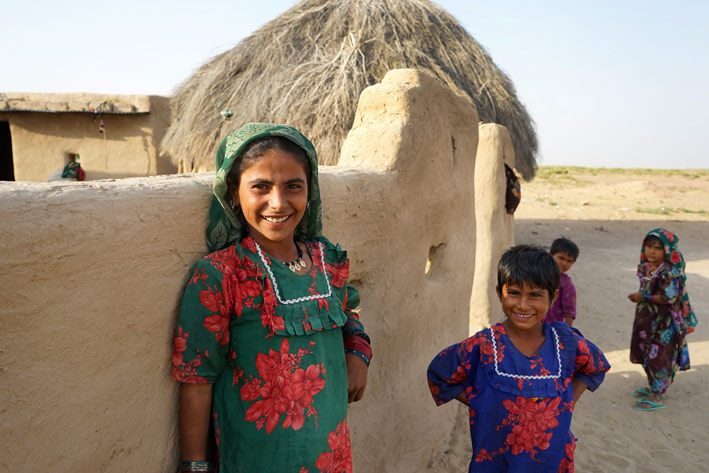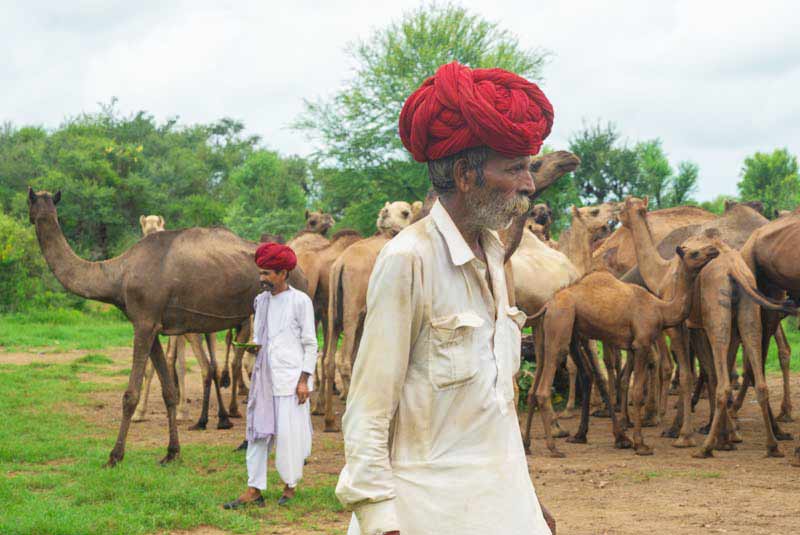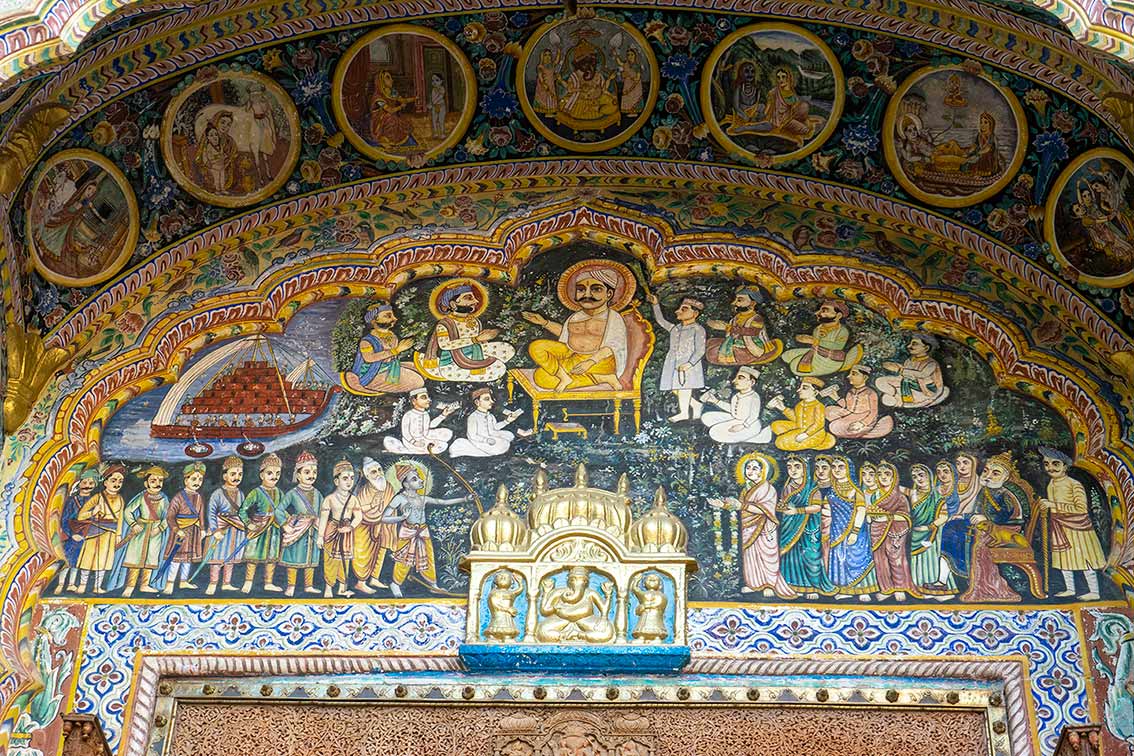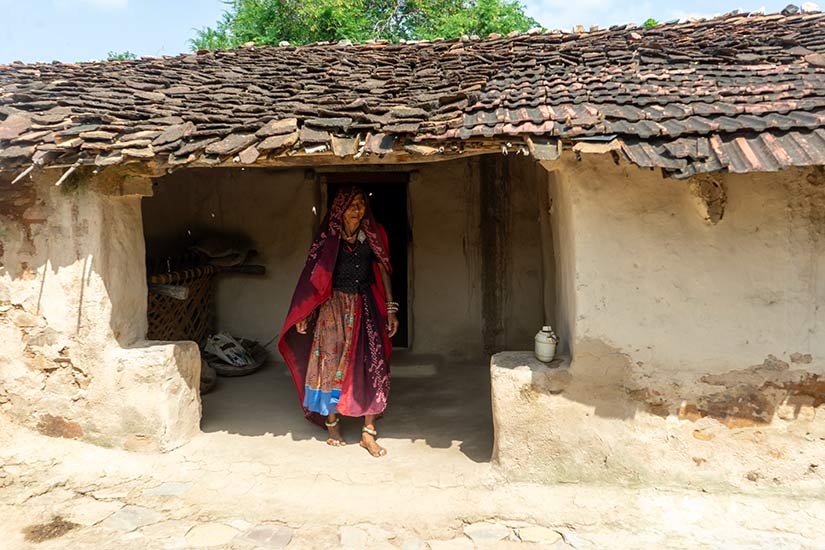Splendour of Shekhawati, Rajasthan
Experience the cultural heart of Shekhawati, Rajasthan’s “open-air art gallery,” on a 10-day tour. You’ll explore a stunning collection of stately homes adorned with intricate frescoes, discover historic wells featuring Persian-style columns, and visit ancestral temples that reveal the region’s rich history.
Often overlooked by organised tours, the Shekhawati region in northwest Rajasthan was once one of the state’s wealthiest areas in the 18th and 19th centuries. Rich Marwari merchants built grand mansions here, adorning them with stunning frescoes that blend Hindu mythology with scenes of everyday life. These masterpieces have earned Shekhawati the nickname, “Rajasthan’s open-air art gallery.”
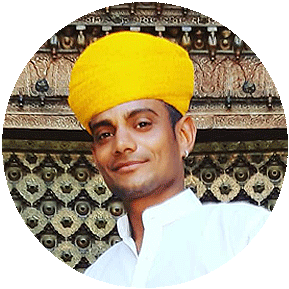
Throughout this trip to the Shekhawati region, you will be accompanied by Dinesh Sharma, co-founder of Mathini Travel. A native of the area and a cultural guide for over 15 years, he is dedicated to helping you discover every corner of this unique region in India.
Overview of Your Trip to the Shekhawati Region
The price indicated above is an estimated price. As we only do tailor-made services, this budget depends on several factors (choice of services, number of people, type of car, time of year, etc.); the final price is that of your personalised (free) quote obtained after an in-depth discussion with you.
THIS TRIP INCLUDES:
- Double occupancy accommodation in 4* boutique hotels.
- All transportation by INNOVA AC car with a driver who speaks basic English (taxes, fuel, accommodation, and driver’s meals included).
- All breakfasts
- Guide for the entire Shekhawati region
- 24/7 support, we are in constant contact with you.
THE TRIP PRICE DOES NOT INCLUDE:
- International flights
- Domestic flights
- Visa fees
- Travel insurance
- Any personal expenses.
- Tips.
- Anything not listed in “included.”
You may also like...
Meeting the Rabari Raïka €1300
Delhi - Mandawa (Shekhawati)
*
Arrival in the late afternoon and check-in at the 4-star Vivaana Hotel, a meticulously restored 19th-century haveli, blending Rajasthan's cultural heritage with contemporary decor.*
Meet Dinesh Sharma, your cultural guide (and the co-founder of this agency), who will accompany you throughout your stay.Mandawa - Dundlod - Mandawa
*
Mandawa boasts a remarkable fort and a plethora of havelis. Among these mansions, the most notable is the "Chokhani double haveli," built with two adjacent wings in the late 19th century by the Chokhanis, prosperous merchants from Mandawa.*
In Dundlod, we will visit the Goenka haveli, dotted with numerous frescoes and objects from the traditional life of yesteryear.*
At the bottom of Dundlod, we will visit the Chhatri (cenotaph) of Ram Dutt Goenka. Built in 1888, the dome features beautiful frescoes depicting the god Krishna dancing with his gopis, interspersed with musicians and peacocks.*
Return to your Vivaana hotel at the end of the day.Mandawa - Nawalgarh - Mandawa
*
Apart from these splendid havelis, Nawalgarh boasts "Kua", wells surrounded by four tall Mughal-style pillars decorated with frescoes. This is unique in India! You will visit the finest examples of these wells.*
You will continue your walk through the city, passing through the various markets and passing by other havelis that cannot be visited, but still feature beautiful exterior frescoes combining Hindu mythology and contemporary objects.*
You will also stop at several temples built in the Shekhawati style.*
Return to your Vivaana hotel at the end of the day.Mandawa - Fatehpur - Ramgarh - Churu - Mandawa
*
We will first visit the havelis of Fatehpur, including those of Singhania and Choudhary (Note: the Nadine le Prince haveli is currently inaccessible).*
We will then continue to Ramgarh, whose main attraction is the cenotaph "Ram Gopal Poddar" which contains beautiful frescoes from the Ramayana. Ramgarh also has many remarkable temples, such as the Shani temple, dedicated to Saturn, decorated with beautiful frescoes and inlaid mirrors.*
We will continue our visit to Churu and its famous Kanhaiya lal Bagla ki Haweli, which has around a hundred windows.*
Return to your Vivaana hotel at the end of the day.Mandawa - Bissau - Mahansar - Jhunjhunu - Mandawa
*
We'll continue to Mahansar, which boasts a gem of a haveli (Sone Chandi Ki Dukaan) whose frescoes display great finesse thanks to the use of gold leaf.*
In Jhunjhunu, we'll visit several temples that feature beautiful frescoes, such as the Bihari Mandir dedicated to Krishna. On the outskirts of town, we'll visit the Mertani Baori, a stepwell built in the 17th century.
*
Return to your Vivaana hotel at the end of the day.Mandawa - Parasrampura - Lohargal - Kiroriji - Shakambari - Mandawa
*
Our first stop will be Parasrampura, a village with a 1750 Chhatri dedicated to Shardul Singh, whose dome is adorned with a fresco in brown tones, one of the oldest in the region. In the same village, the small Gopinath temple also houses frescoes in the same style.*
We will then travel to Lohargal, a gem nestled in the heart of the Aravalli Mountains, among century-old banyan and mango trees. It is a major pilgrimage site that contains a temple dedicated to the sun god (Surya). A sacred pool attracts large crowds of worshippers for their ritual ablutions. The place is also famous for its green mango "achar" (condiments).*
We will continue our exploration of this part of Shekhawati with a little-known spot: Kiroriji. This place has two spring water pools, one hot and the other cold. It is said that the Pandava brothers bathed here. Every year in August, Hindu pilgrims make a 74 km parikrama (circumambulation) around the mountains, stopping at this spot.*
We will end the day at the Shakambari Temple, dedicated to the goddesses Brahmani and Rudrani. The mandapa was originally built in the 7th century CE. The Shekhawati-style motifs were added in the 20th century.*
Return to your Vivaana hotel at the end of the day.Mandawa - Harshnath - Jeen mataji - Khatu Shyam ji - Mandawa
*
Our first stop will be Harshnath Temple, which stands proudly atop a hill in the Aravalli Range. The shrine is believed to have been built in the 10th century CE by the ascetic Shiv Bhavarakta, during the reign of the Chahamana king Vigraharaja I (the Chauhans of Ajmer). It features beautiful sculptures of deities and apsaras.*
Our second stop will be Jeen Mataji Temple, the goddess of power, an incarnation of Durga. This place is said to be thousands of years old and attracts thousands of pilgrims every year.*
We will end this temple tour with Khatu Shyam Ji, one of the most important pilgrimage sites in India. Khatu Shyam Ji is considered to be the 10th incarnation of Lord Vishnu once the Kali Yuga period reaches its final stage.*
Return to your Vivaana hotel at the end of the day.Mandawa - Laxmangarh - Sujangarh - Mandawa
*
We'll first stop at Laxmangarh, overlooked by a massive fort built in 1862 by Laxman Singh, King of Sikar. While the fort offers little of interest, the town is full of refined mansions, including the Char Chowk Haveli and the Kedia Haveli. The Radhi Murlimanohar Temple, built in 1845, is also worth a visit with its remarkable sculptures of deities.*
On the way to Sujangarh, we will stop at the Salasar Balaji Temple, the only temple in India where the monkey god Hanuman ji wears a beard and mustache!*
In Sujangarh, we will visit the Venkateswaraswamy Temple, a miniature replica of the Balaji shrine in Andhra Pradesh. Its architecture is therefore Dravidian in style. We will also visit the handloom weaving workshops in the surrounding villages.*
Return to your Vivaana hotel at the end of the day.Mandawa - artisanat - Surajgarh
*
Before that, we will visit several artisans, including tie-dye, a local tradition, potters, and makers of "chouria," the famous resin bracelets. Overnight at Surajgarh Fort.Surajgarh - Delhi
